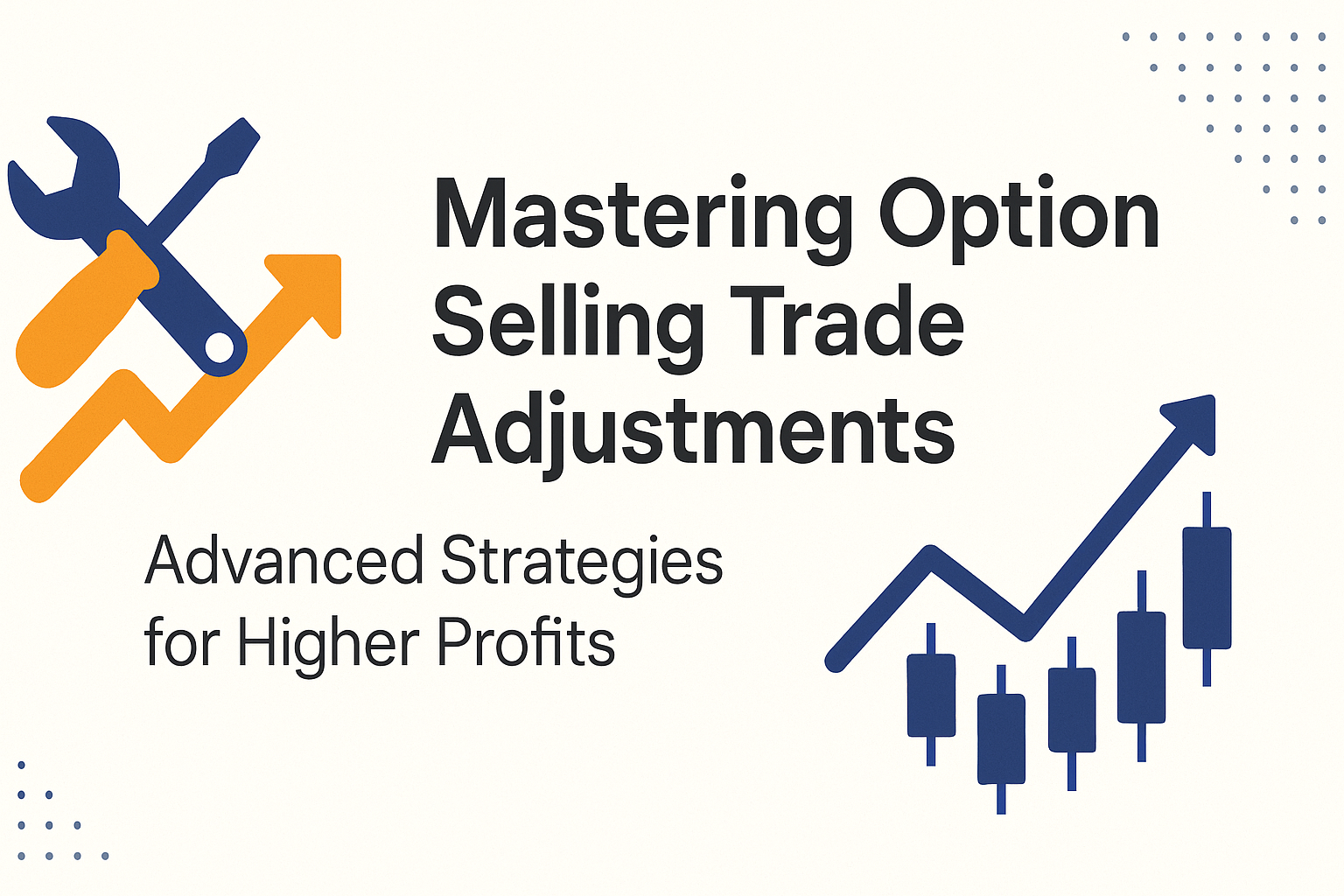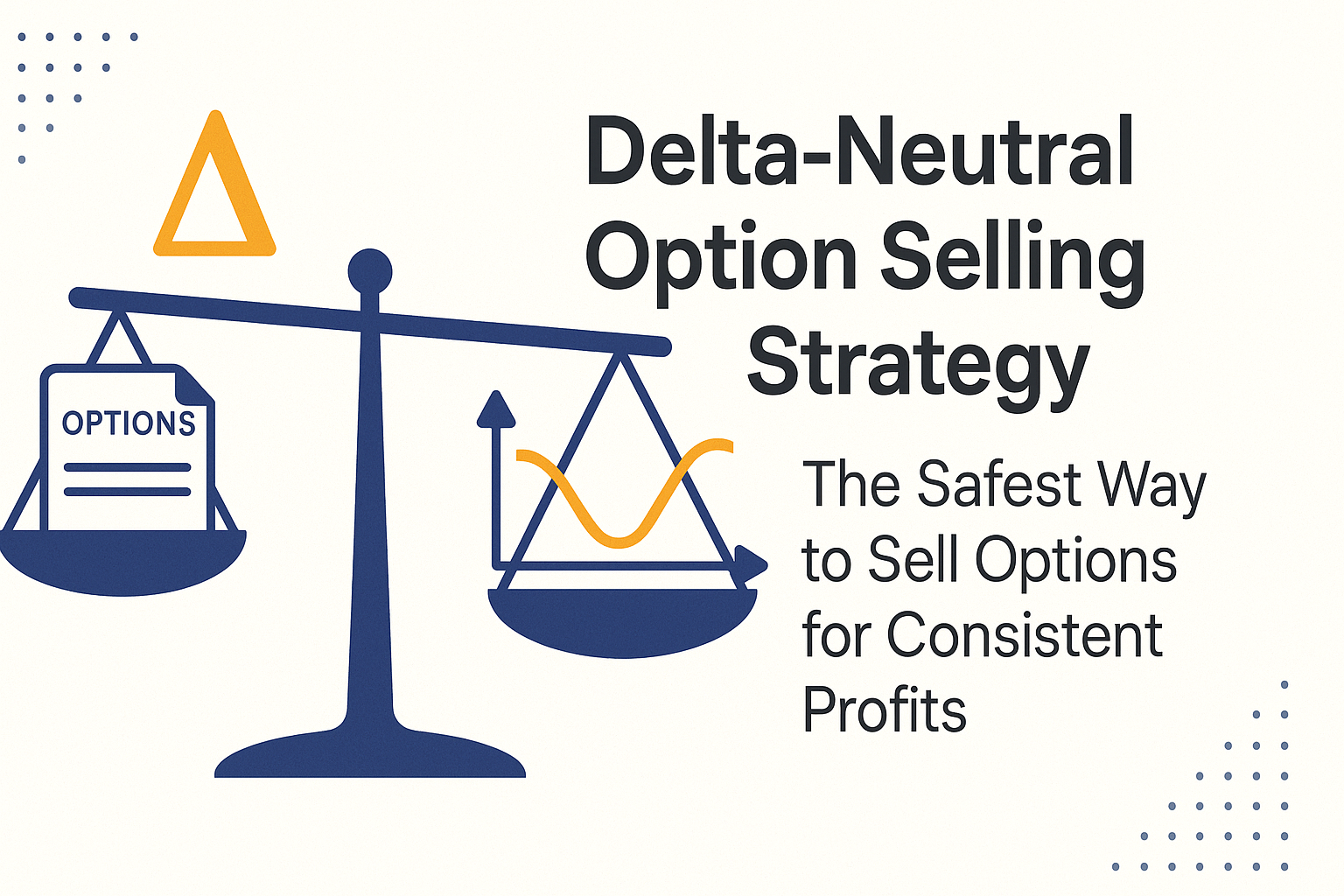How to Choose the Best Strike Price in Option Selling for Maximum Profit?
One of the most important decisions in option selling is choosing the right strike price. It determines your probability of profit, your risk-reward ratio, and your overall consistency in generating income. Yet, most beginner traders either guess it or pick it emotionally.
In this guide, we’ll break down everything you need to know about choosing the ideal strike price in option selling — from understanding Delta to assessing market trends — so you can sell options with confidence.
What Is a Strike Price in Option Selling?
A strike price is the fixed price at which the option buyer has the right to buy (Call) or sell (Put) the underlying asset. As an option seller, the strike you choose defines your trade’s risk-reward and probability of success.
Also Read: What is Option Selling? The Proven Beginner’s Guide to Consistent Trading Income
Why Strike Price Matters for Option Sellers
Choosing the right strike price impacts:
- Premium Received: Higher premiums usually come with higher risk.
- Probability of Profit (POP): Distant strikes may offer higher POP but lower returns.
- Risk Exposure: Closer strikes carry more risk; farther strikes reduce risk but limit reward.
Key Factors to Consider Before Choosing a Strike Price
1. Delta (Probability of Being ITM)
Delta measures the probability of the option expiring in-the-money. For sellers:
- Call Option: Delta 0.15–0.30 is preferred
- Put Option: Delta -0.15 to -0.30
Lower Delta = Higher probability of expiring worthless = More consistent returns
Also Read: Deep dive into Delta and other Option Greeks
2. Support and Resistance Levels
Use technical analysis to identify strong support (for Puts) and resistance (for Calls). Choose strikes just beyond these levels to improve your edge.
3. Implied Volatility (IV)
Higher IV means inflated option premiums. Use this to your advantage by selling strikes farther away for more credit.
4. Time to Expiry
Weekly options = Faster Theta decay, but riskier. Monthly options = More stable, ideal for beginners. Your strike selection should align with your holding period.
5. Market Trend Bias
- Bullish Market → Prefer Bull Put Spread below support
- Bearish Market → Prefer Bear Call Spread above resistance
- Sideways Market → Use Iron Condor or Short Straddle with balanced strikes
Step-by-Step Guide to Selecting the Ideal Strike Price
Step 1: Analyze Market Trend
Use trendlines, moving averages, or price action.
Step 2: Use Option Chain Tools
Check the option chain for:
- Delta (0.15–0.30)
- Open Interest (High = strong participation)
- IV Rank (High = good for selling)
Step 3: Align with Support/Resistance
Mark key levels on charts. Avoid selling options inside volatile zones.
Step 4: Calculate Risk-Reward
Use tools like Opstra or Sensibull to simulate potential gains/losses.
Step 5: Choose Strategy Accordingly
- High IV + sideways = Iron Condor
- Bullish + support = Bull Put Spread
- Bearish + resistance = Bear Call Spread
Tools to Help You Pick the Right Strike
- Option Chain Analyzers: Sensibull, Opstra, NSE Option Chain
- Technical Charting: TradingView, ChartInk
- Volatility Checkers: IV Rank on Opstra or Sensibull
- Trade Simulators: Sensibull, Options Oracle
- Visit my resources page for the best tools and platforms every trader should know about.
Common Mistakes to Avoid
- Choosing ATM/ITM Strikes for Selling: High risk with low POP
- Ignoring Market Trend: Selling Puts in falling markets is risky
- Overlooking IV and Premium: Low IV = low reward, not worth the risk
- No Hedging Strategy: Always use spreads to control risk
Real-Life Example
Let’s say NIFTY is trading at 22,300.
- You expect it to stay above 22,000 in a bullish market.
- Choose to sell 22,000 PE (Delta ~0.20) and buy 21,800 PE to hedge.
- Net premium received = ₹35
- Max loss = ₹165; Max profit = ₹35
- POP = 78–80%
You’ve used Delta, trend, support levels, and hedging — all in one decision.
Summary
Choosing the best strike price in option selling isn’t a guessing game. It’s a data-driven decision that combines:
- Delta (POP)
- Market bias
- Technical support/resistance
- India Vix and premium levels
Follow this framework and you’ll place trades with confidence, consistency, and better control over your income outcomes.
Final Thoughts
Your success as an option seller depends not just on strategy, but precision. Strike price selection is the heart of that precision. Learn it, apply it, and you’ll see your consistency grow month after month.






